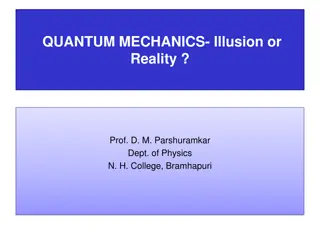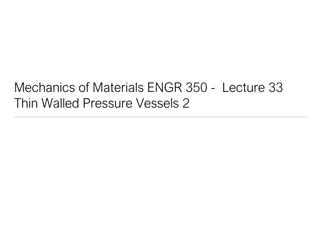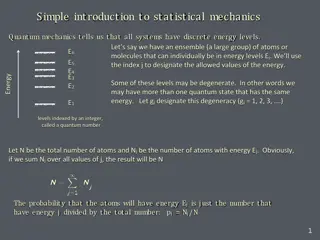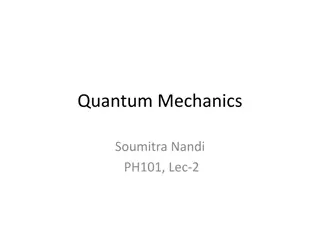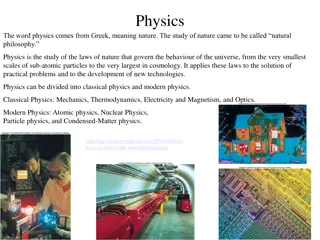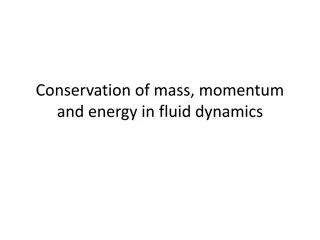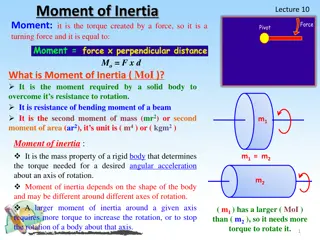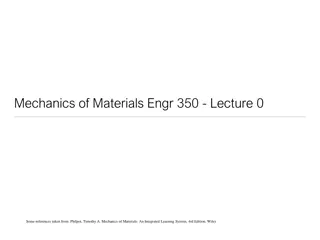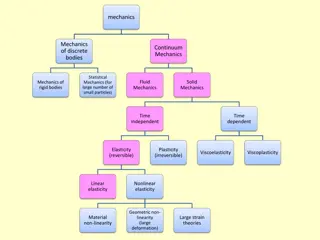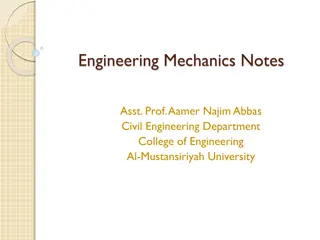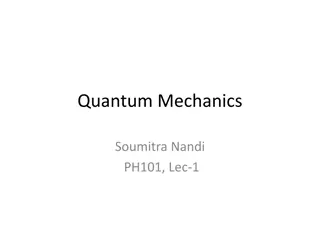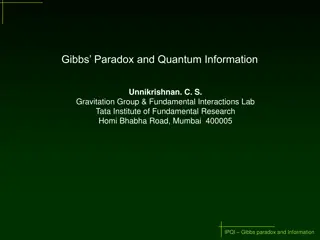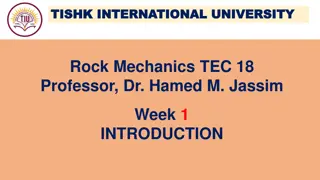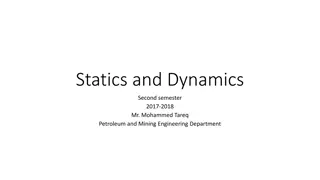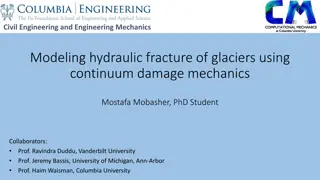Analysis of Determinate Structures in Engineering Mechanics
Structural analysis in engineering mechanics involves treating structures as rigid bodies, analyzing internal forces like axial forces, shearing forces, and bending moments. Strength of materials explores material behaviors under different internal forces, while structural forms include one-dimensional, two-dimensional, and three-dimensional elements. Equilibrium and compatibility conditions ensure structural stability and joint connectivity.
Download Presentation

Please find below an Image/Link to download the presentation.
The content on the website is provided AS IS for your information and personal use only. It may not be sold, licensed, or shared on other websites without obtaining consent from the author.If you encounter any issues during the download, it is possible that the publisher has removed the file from their server.
You are allowed to download the files provided on this website for personal or commercial use, subject to the condition that they are used lawfully. All files are the property of their respective owners.
The content on the website is provided AS IS for your information and personal use only. It may not be sold, licensed, or shared on other websites without obtaining consent from the author.
E N D
Presentation Transcript
ANALYSIS OF DETERMINATE STRUCTURES SUSHMA M ASST. PROFESSOR, DEPT. OF CIVIL ENGINEERING K S SCHOOL OF ENGINEERING & MANAGEMENT
ENGINEERING MECHANICS STRUCTURAL ANALYSIS Treating the entire structure as a single rigid body and finding the reactions from supports is the first step in analysing a structure which is covered under Engineering Mechanics While transferring the loads acting on the structure, the members of the structure are subjected to internal forces like axial forces, shearing forces, bending moments. StructuralAnalysis deals with analysing these internal forces in the members of the structures and torsional STRENGTH OF MATERIALS The behaviour of the materials of the structures subjected to different types of internal forces are covered under Strength of Materials
STRUCTURAL FORMS ONE- DIMENSIONAL ELEMENT TWO- DIMENSIONAL ELEMENTS THREE- DIMENSIONAL ELEMENTS
ONE-DIMENSIONAL ELEMENTS In this type of structural element, the loads are acting along the length of the member. The length of such members is quite large in comparison with other dimensions. The bending takes place along the length in one direction
TWO-DIMENSIONAL ELEMENTS These elements are widely used in practice. These elements can bend in both directions (i.e length and breadth) The thickness of the element is small when compared to other dimensions
THREE-DIMENSIONAL ELEMENTS Its deformations are with respect to three axes
CONDITIONS OF EQUILIBRIUM When taken an entire structure under consideration, the reactions from the support and the loads on the structure should be in static equilibrium The equations of static equilibrium are as follows: The summation of all the forces along any axis is zero The summation of all the moments about any axis is also zero
COMPATIBILITY CONDITIONS The members meeting at a joint will continue to meet at the same joint even after deformation takes place At rigid-joints, the angle between any two members remains the same even after deformation takes place. The compatibility conditions will help in formulating additional equations
LINEAR AND NON-LINEAR ANALYSIS A system is called a Linear System if its material has linear stress- strain relationship and a small deflection. A system will be treated as a non-linear system if its material does not have linear stress-strain relationship or its deformation is so large that a change of geometry cannot be neglected in the analysis If the non-linearity is due to stress-strain relationship, it is called material non-linearity and if the non-linearity is due to considerable changes in the geometry, it is called geometric non- linearity
STATICALLY DETERMINATE AND INDETERMINATE STRUCTURES A Structural system which can be analysed by using equations of statically equilibrium only is called as Statically Determinate Structure A structure which cannot be analysed by using equations of equilibrium only is called a Statically Indeterminate Structure To analyse indeterminate structures, apart from using equations of equilibrium one has to determine the various deformations and make use of compatibility conditions
USEFUL LINKS https://nptel.ac.in/courses/105/105/105105166/ https://www.youtube.com/watch?v=s4CN6aVKhPo&ab_channel=nptelhrd



